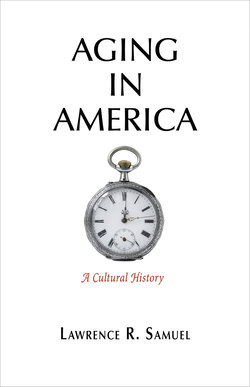Aging in America

Реклама. ООО «ЛитРес», ИНН: 7719571260.
Оглавление
Lawrence R. Samuel. Aging in America
Отрывок из книги
Aging in America
A Cultural History
.....
Democrats, especially Frank Church from Idaho, were cautiously optimistic that the president’s call for this conference was more than just about getting reelected. Church was chairman of the Senate Special Committee on Aging, which was an outcome of the second White House Conference on Aging. Church was a staunch defender of the rights of older Americans, and he made it clear that this third conference was an ideal opportunity to make real progress. “I think there is no country, that has the means that we do, that has done as badly in providing for the elderly as we have here in the United States,” he said on the eve of the conference, calling our performance in this area “one of the greatest travesties of the contemporary American way” and “one of the most conspicuous of our failures.” Church and his colleagues on the Senate Special Committee were fully aware that getting the president to agree to all their demands would be an uphill battle given his record (especially as there was at least as much interest among politicians in capturing the youth vote), reason enough for them to turn up the heat as the meeting approached.28
Another politician friendly to the cause of aging was Representative James A. Burke (D-MA), a member of the House Ways and Means Committee. In one speech leading up to the conference, Burke proclaimed that there was a need for “a revolution in our thinking about the elderly,” just the kind of thing the delegates and seniors themselves wanted to hear. Some kind of national policy on aging was expected to result from the conference, although both the president and Congress would have to agree to whatever was presented to them. Hopes were high that a bill creating a heavily funded federal department of aging with a cabinet-level secretary would ultimately result from the conference—only this was likely to lead to the revolution Burke had in mind. If affordable health care had been the biggest outcome of the second conference, however, financial assistance was clearly the goal of the third. Many retirees lived in poverty or close to it, making money the central issue for older Americans.29 The high inflation rate of the early 1970s was hitting anyone living on a fixed income hard, with those subsisting solely on Social Security especially vulnerable to rising prices.30
.....